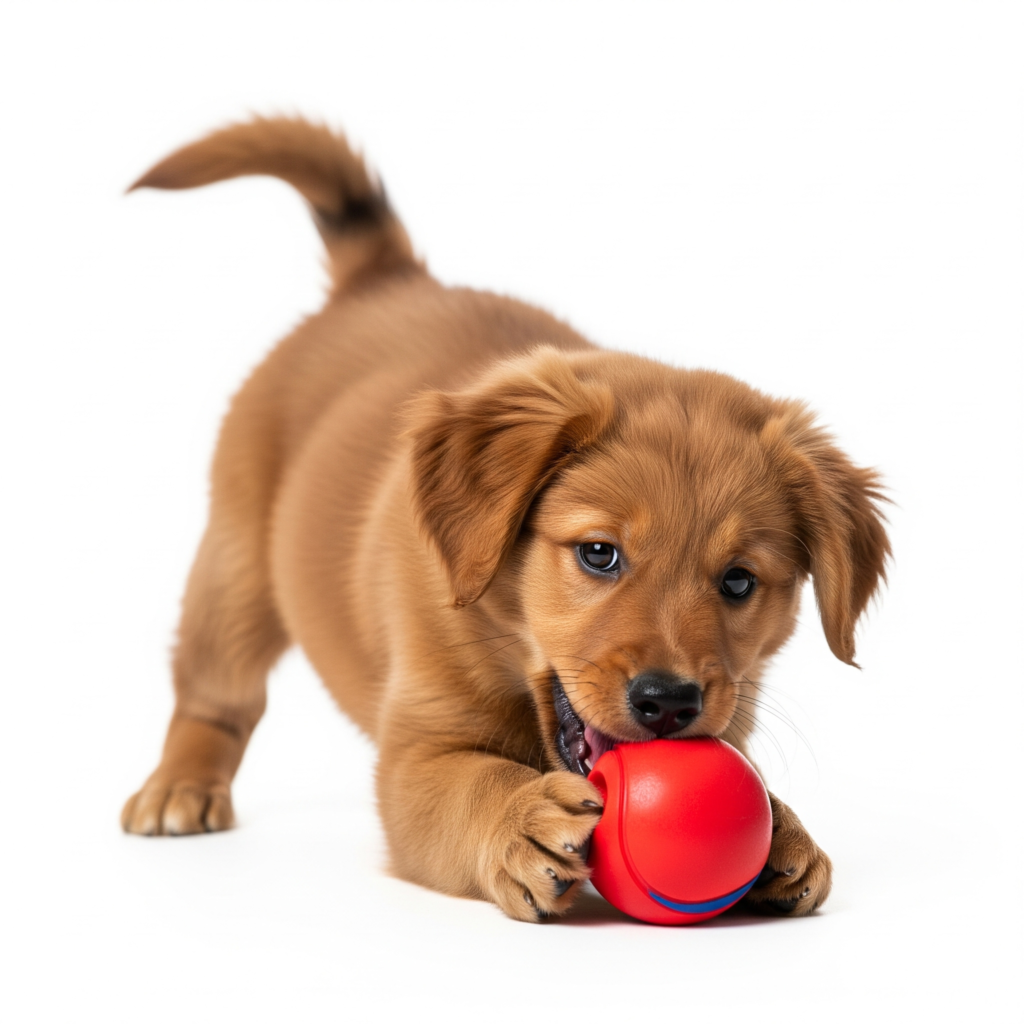
Working from home or heading to the office while raising a puppy can be tricky. Puppies are full of energy, and if that energy isn’t directed somewhere positive, it often turns into chewing furniture, barking nonstop, or demanding constant attention.
The good news? You can keep your puppy engaged, stimulated, and safe during your work hours—with a few smart strategies and the right tools. Here’s how to keep your puppy busy while you work, without feeling guilty or overwhelmed.
Why Keeping Puppies Busy Is So Important
Bored puppies don’t just get restless—they get destructive. Chewing, barking, digging, or potty accidents are often signs of an under-stimulated pup. Keeping your puppy mentally and physically engaged during the day helps with:
- Better focus and less whining
- Smoother crate and potty training
- Reduced anxiety and separation stress
- Overall improved behavior and obedience
Let’s explore easy, realistic ways to help your puppy stay happy while you focus on your tasks.
1. Create a Safe Puppy Zone
Start by setting up a puppy-proofed area where they can stay while you work. Use a playpen, crate with attached exercise pen, or baby gates to block off a safe part of the room.
Make it cozy with:
- A soft bed or blanket
- A few favorite chew toys
- A water bowl or no-spill dish
- Potty pads (if needed for young puppies)
This space should feel calm and secure—not like punishment.
2. Use Interactive Toys and Puzzles
Mental stimulation is just as tiring (and helpful) as physical exercise. Some great solo-play toys include:
- KONG stuffed with peanut butter or wet food
- Snuffle mats for foraging fun
- Treat-dispensing balls or puzzles
- Frozen carrot sticks or dog-safe bones
Tip: Prep a few toys in advance and rotate them throughout the day to keep things fresh.
3. Tire Them Out Before You Clock In
A tired puppy is a calm puppy. Schedule a short play session or walk before your workday starts.
Even 20–30 minutes of fetch, tug-of-war, or training exercises can burn off excess energy and help your puppy settle into quiet time.
4. Time Breaks Strategically
Instead of trying to power through an 8-hour day nonstop, use short breaks (just like you would for coffee or stretching) to engage with your puppy.
Try:
- A quick 5-minute potty break
- A short training session with treats
- Tossing a ball down the hallway
These little check-ins break up the day for your pup and help them stay calm between interactions.
5. Use Puppy-Safe Background Noise
Some puppies feel comforted by soft music, nature sounds, or even pet-themed TV shows (yes, DogTV is a thing!). It mimics company and helps reduce feelings of loneliness when you’re focused or away.
Try playlists like:
- “Dog Calming Music” on Spotify
- Low-volume classical or jazz
- YouTube’s “Relax My Dog” channel
6. Schedule a Midday Playtime or Walk
If you work from home, block out 15–30 minutes mid-day for active puppy time. If you’re at the office, consider hiring a dog walker or asking a friend/family member to stop by.
Puppies thrive on routine, and a predictable mid-day outing helps reset their energy and makes afternoons easier to manage.
7. Start Crate Time Slowly and Positively
If you plan to crate your puppy while working, introduce it gradually. Feed meals inside the crate, toss treats in, and let them nap in it with the door open at first.
Eventually, they’ll associate crate time with calm and comfort, not isolation.
8. Consider Doggy Daycare (When They’re Old Enough)
For puppies with lots of energy or social needs, doggy daycare once or twice a week can be a lifesaver. It gives them exercise, mental stimulation, and socialization all at once.
Just wait until your puppy is fully vaccinated and has basic obedience before enrolling.
Final Thoughts
Balancing work and puppy parenting takes patience—but it is possible with the right plan. The key is combining structure, enrichment, and affection throughout the day. When your puppy knows what to expect and has ways to stay busy, they’re less likely to cause trouble—and you can focus on work with less guilt.
Even better? A calm, well-exercised puppy at the end of your day means more peaceful evenings for you both! 🐾💻 PetsDogPuppy
